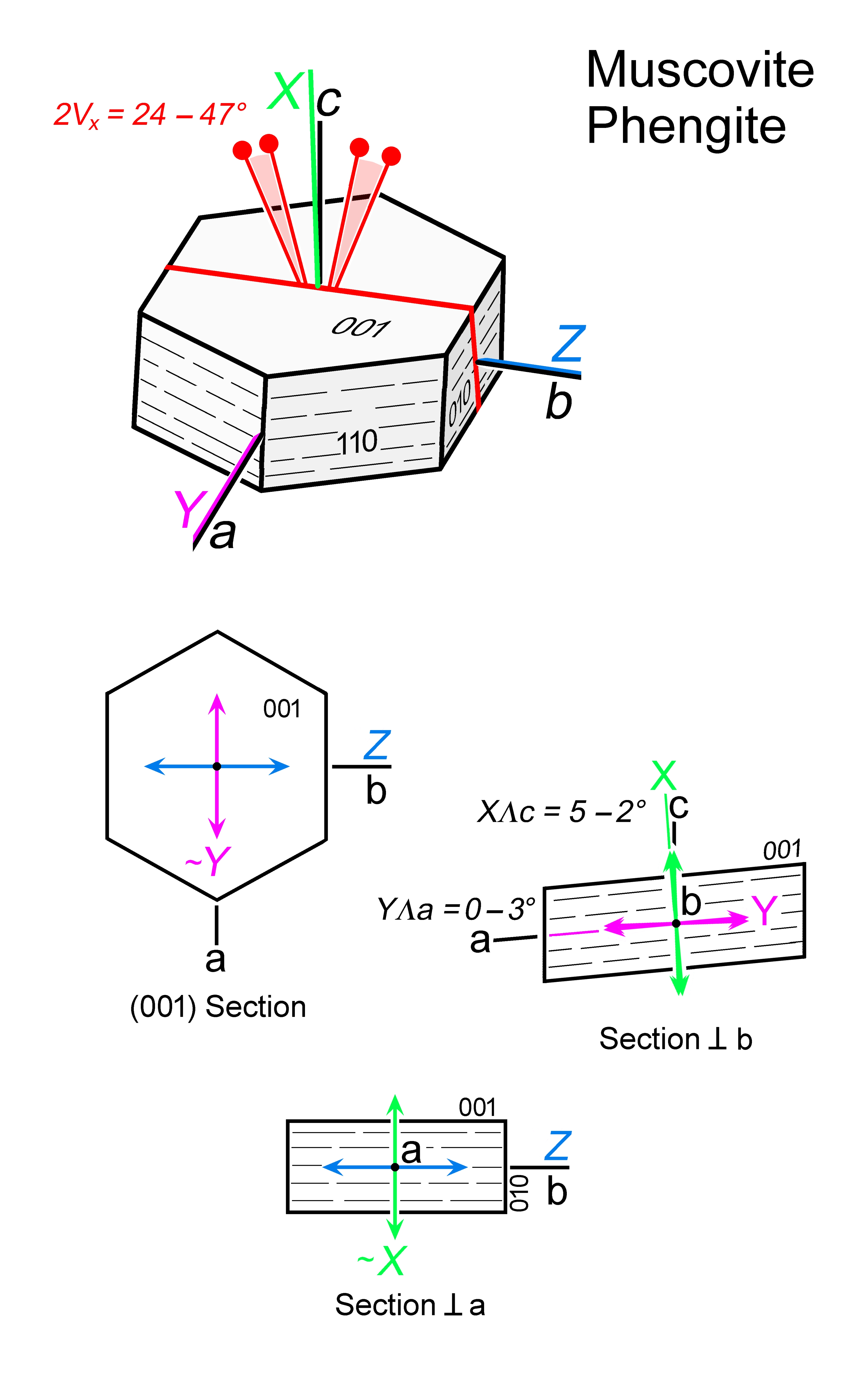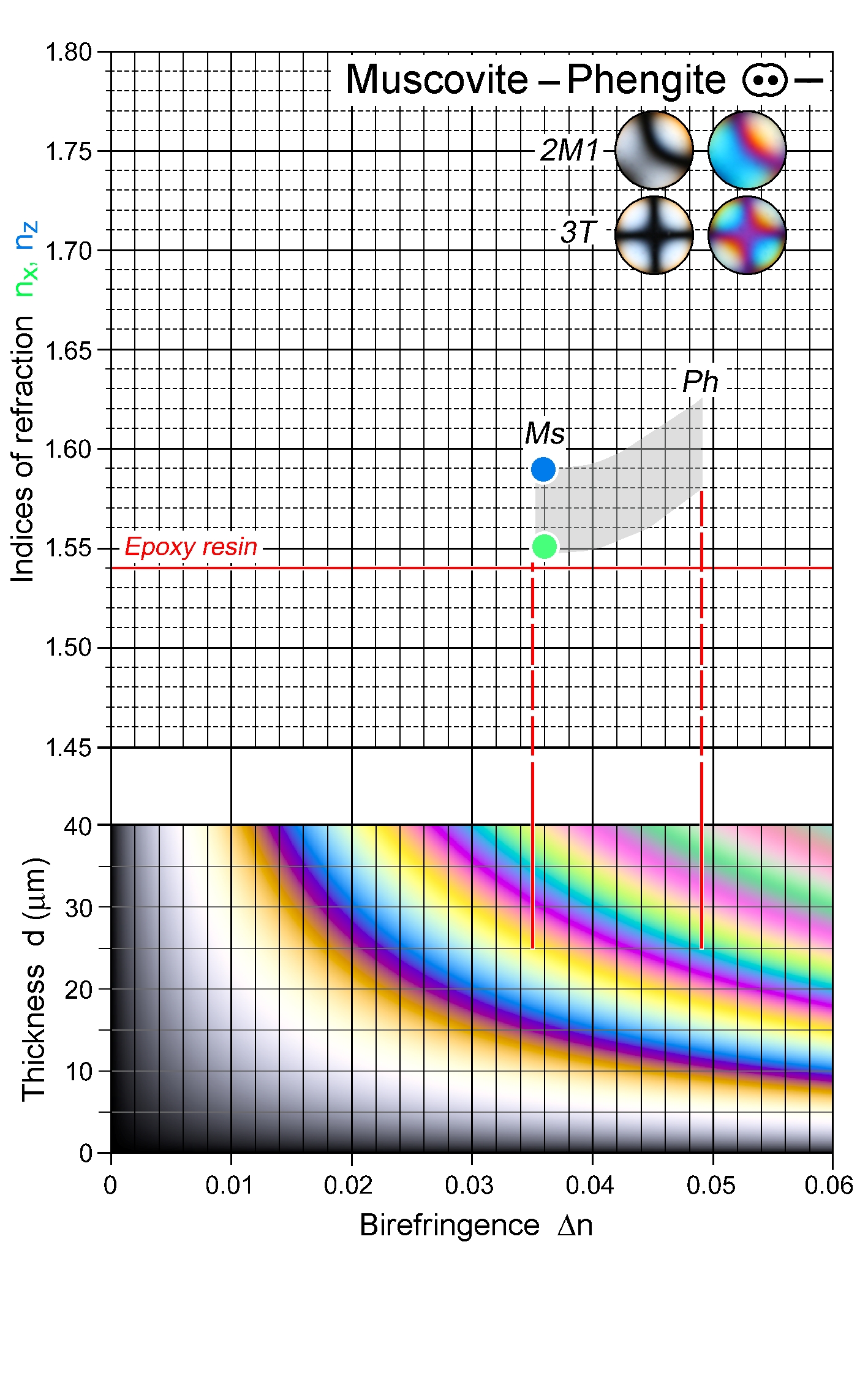|
| Formula | KAl2(AlSi3O10)(OH)2 - KAl2-x(Mg,Fe)x(Si3+xAlxO10)(OH)2 |
| | Optic class & sign | Biaxial negative |
| | Optical orientation | X near c, Y near a, Z = b |
| | Optical plane | Orthogonal to (010), close to (100) |
| | Relief | Low- to moderate-positive |
| | Refractive indices | nx = 1.547 -1.580
|
|
ny = 1.582 -1.620
|
|
nz = 1.587 -1.624
|
|
| n increases with Fe2+, Mg, Fe3+, Mn, Cr, V, Ti |
| | Birefringence (max.) | 0.035 - 0.049 |
| | | |
| | Optic Angle
| 2Vx
= 24 - 47°, 3T Mus 0°; 2V decreases with increasing impurities; phengite 0 - 20° |
| | 2Vz
|
| | Sign of elongation | Length-slow, l (+) in sections at high angles to (001) |
| | Interference figure | Acute bisectrix figures with multiple isochromes in sections Ʇ c |
| | Colour / pleochroism | Colourless; fuchsite is pale green pleochroic |
| | Zoning | |
|
|
| Form | Habit | Flaky to platy |
| | | Surface | Typically subhedral with well-developed (001) crystal faces |
| | Cleavage | {001} perfect |
| | Twinning | Twinning on {001} may be present, but can only be observed in sections close to (010) if extinction to cleavage traces deviates from 0°. |
| | Extinction | Straight or nearly straight to {001} traces; max angle ca. 3°.
Characteristic “bird’s-eye-maple” mottled structure. |
|
|
| Reaction textures | Hydrous breakdown product of feldspars, andalusite, kyanite, sillimanite |
| | Alteration / decomposition | Highly weathering-resistant; sericite is itself a common alteration product. |
|
|
| Occurence | Ign | Aluminous granites; pegmatites |
| | | Met | Abundant in sub-greenschist to amphibolite facies metapelites; impure quartzites |
| | | Sed | As an alteration or weathering product (sericite) or a detrital component in clastic sediments |
| | | Hyd | Greisen, veins; common alteration product of feldspars |
| | | Other | |
|
|
| Distinctive properties | Habit, single perfect cleavage, high Δn and lack of colour; mottled extinction (a property shared with other sheet silicates).
Talc, pyrophyllite and pure phlogopite may be hard to distinguish optically from muscovite. Occurrence may give clues. Paragonite and muscovite/phengite cannot be distinguished optically, but are easily distinguishable by XRD. |
| | Additional comments | The “bird’s eyes” are a preparation effect relating to minute indentations along the lower and upper grain surfaces exposed during grinding. A high-quality polish can reduce that effect significantly. |
|
|

 Images
Images 


 Images
Images 
